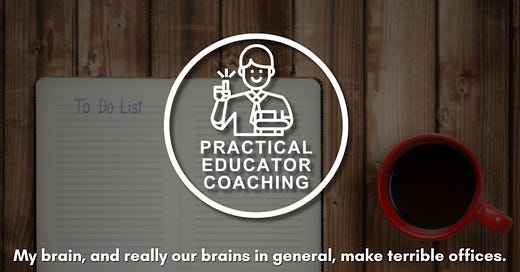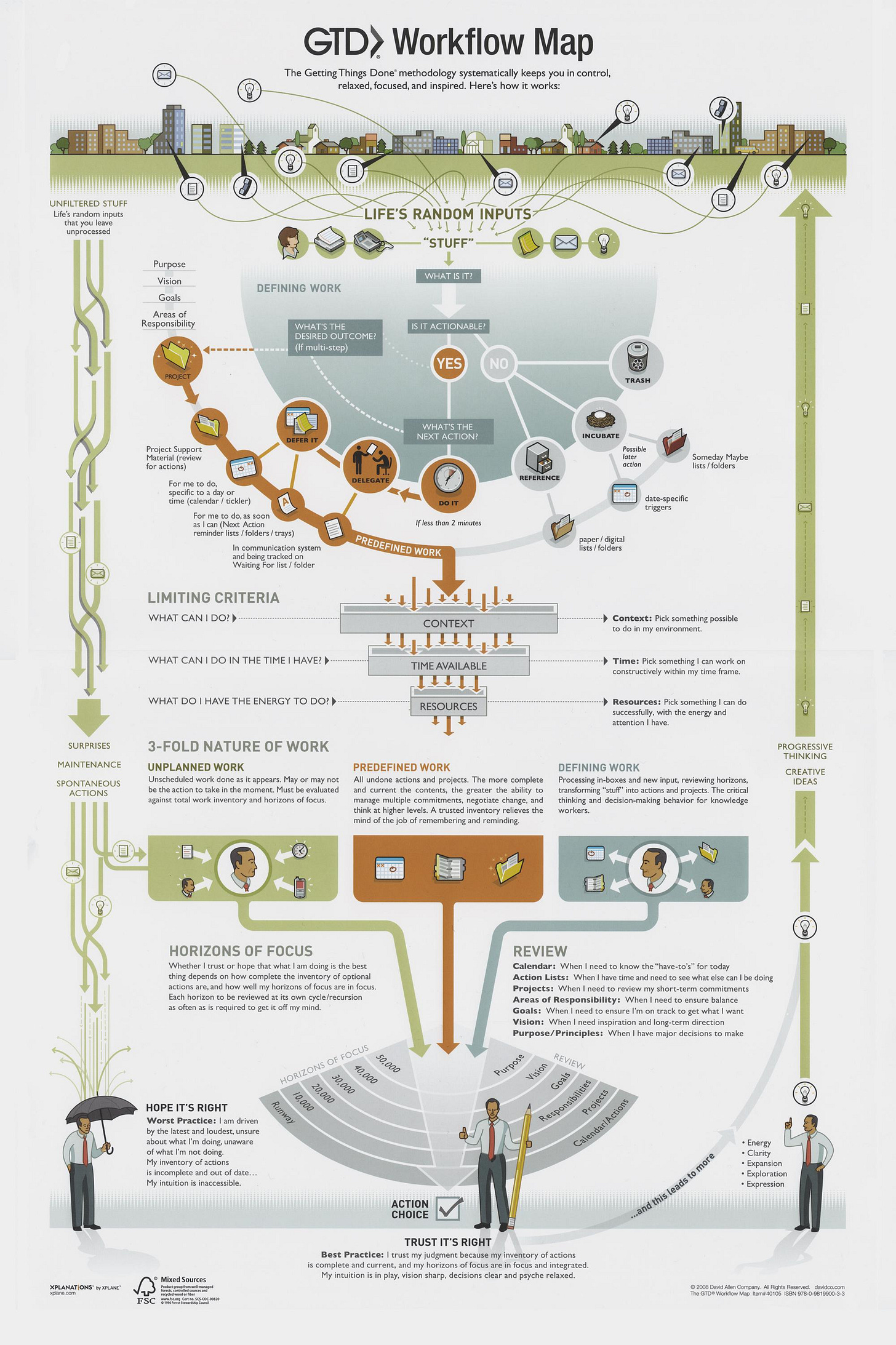Hey, how’s it going? I’m Erik Johnson—a veteran social studies teacher, university professor, and educator coach. In this newsletter, I share practical teaching tips, deep dives into education topics, and the occasional piece on my personal interests. If it’s your first time here, take a look at my coaching homepage, and don’t forget to subscribe!
A Free Show and Tell Article
Once a month, I take a moment to write about something that means a lot to me, even if it isn’t directly related to teaching. I hope you enjoy it!
Since the possibility and responsibility of long-term projects entered my life, I’ve found they really stress me out. In a lot of ways, that’s a bummer. So much of life is a long-term project of some kind. On the flip side, it’s given me some superpowers in the realm of executive function. I’m not a procrastinator at all, and if something needs to get done, I generally devote a lot of energy to finishing it promptly.
Still, throughout my life, I’ve sometimes found myself in this weird and cursed mental program where I feel compelled to finish everything as quickly as possible. I have no patience or regard for delaying the gratification of completion. This has led to things like rushing through tasks or throwing money at problems, all in the service of simply getting things done.
This became a problem when I started teaching.
In teaching, there’s never really a “done.” Sure, there’s a minimum viable product, but every deliverable can always be improved or enhanced. A teacher could always…
Provide more feedback on grading
Further tune a lesson plan
Add detail to assignments
Differentiate classroom tasks
Make more phone calls home
Plan upcoming lessons and units
Decorate or clean their classroom
Study up on class content
…and more!
When I started teaching, this was a nightmare for me. I remember the summer before my first year, sitting on the front porch at my parents’ house, making notes from a World Studies textbook and really wishing I was playing the copy of Fantasy Life my brother had gotten me.
Instead, I was struggling with where to begin and where to stop in my prep for the school year. Generally speaking, I knew I wanted the first week or so of materials ready. But as a baby teacher, and someone without systems to manage my tasks, I couldn’t quite figure out how to approach that preparation. I’d crafted a big ol’ list of things I thought I needed to do, but I definitely didn’t feel effective. It was in this rudderless fashion that I bumbled through my first few years.
Thankfully, I did survive those years! They went pretty well! I’m proud of the work I did and the growth I achieved. But I constantly had stuff rattling around in my head. The problem? My brain, and really our brains in general, make terrible offices.
I discovered David Allen’s Getting Things Done a couple of years into my teaching practice. I’d been looking for a to-do list app and had gone down deep rabbit holes trying everything under the sun (my ultimate to-do list app journey over the years: Post-It Notes ➡️ Google Tasks ➡️ TickTick ➡️ Todoist ➡️ Things 3 ➡️ Apple Reminders). I kept seeing people mention something called Getting Things Done. It sounded like a weird cult or scammy subscription at first. I was super skeptical.
But people kept saying it changed their lives!
Now, ten years into my teaching career, I still rely on GTD to stay sane. I’m not quite as religious about it as I once was, but David Allen’s productivity method continues to give me that same sense of calm clarity.
When I stumbled upon the site GTD in 15 Minutes, I realized it was literally just a fancy way of organizing to-do lists! I ordered both the book and the audiobook (David Allen’s comforting voice really brought me a lot of peace), and set to studying up. I also got involved in the GTD Forums.
Suddenly, I had a toolset and structure to organize my work. As a teacher, my tasks remained infinite, but GTD helped me get those tasks out of my head and into an inbox. It taught me how to process and organize them. I could now sort them by context, so I only saw specific work in appropriate places. Instead of my mind being a jangling mess of competing priorities, I began to experience a calmer sense of clarity around the work I needed to do.
My GTD journey wasn’t without hiccups. I got hung up on following the system exactly right. I obsessed over the perfect app. I felt guilty if I wasn’t doing work or tackling enough tasks after organizing them. In many ways, I had to grow into these systems.
And grow I did. In 2019, I was invited to be on the official GTD podcast! This episode is still worth a listen. Just know that since then, a lot has changed in my GTD practice, my teaching methods, and also (lol) my stage presence:
Now, ten years into my teaching career, I still rely on GTD to stay sane. I’m not quite as religious about it as I once was, but David Allen’s productivity method continues to give me that same sense of calm clarity. It helps me sort, process, and breathe during the workday and in my personal life. Frankly, the best gift GTD has given me is the ability to be present. Whether I’m teaching, enjoying my hobbies, or spending time with loved ones, I am able to exist in the moment. I’m not constantly running through to-do lists in my head or feeling guilty about what I should be doing. David Allen’s GTD absolutely saved my brain.





